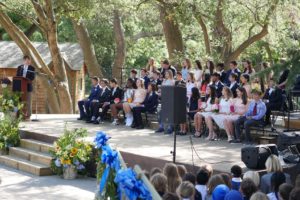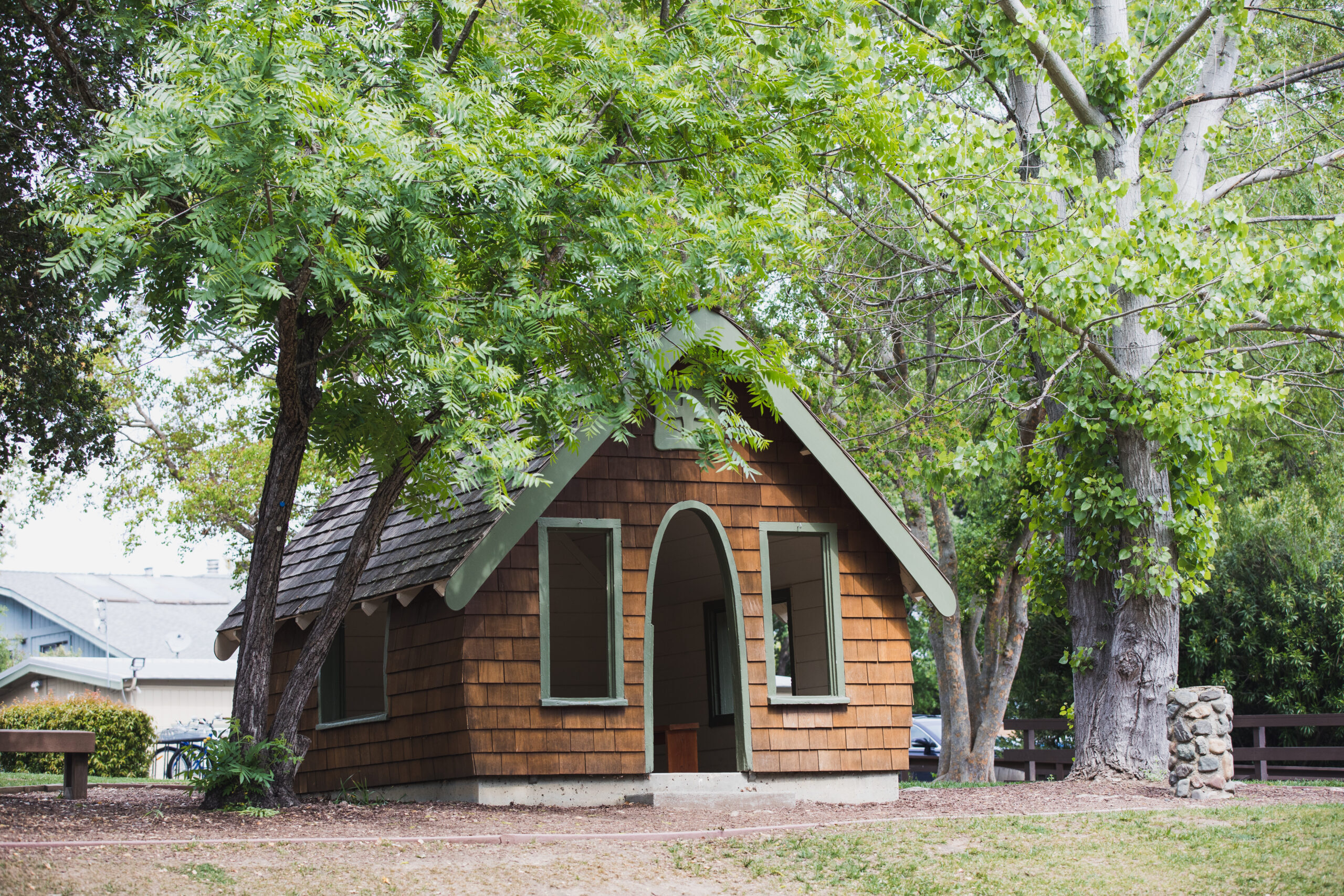 Good morning and welcome to the 2018 Hillbrook school graduation ceremony. I want to extend a special welcome this morning to our guests on stage with me, including Los Gatos Mayor Rob Rennie, Chair of the Board of Trustees Chuck Hammers, Head of Middle School Christina Pak, 8th Grade Team Lead Eden Maisel, and Weston Del Signore, Hillbrook Award Winner for the Class of 2014 and recent graduate from the Bellarmine Class of 2018. Most importantly, it is my honor to welcome the soon to be graduated members of the Hillbrook Class of 2018.
Good morning and welcome to the 2018 Hillbrook school graduation ceremony. I want to extend a special welcome this morning to our guests on stage with me, including Los Gatos Mayor Rob Rennie, Chair of the Board of Trustees Chuck Hammers, Head of Middle School Christina Pak, 8th Grade Team Lead Eden Maisel, and Weston Del Signore, Hillbrook Award Winner for the Class of 2014 and recent graduate from the Bellarmine Class of 2018. Most importantly, it is my honor to welcome the soon to be graduated members of the Hillbrook Class of 2018.
Boyan Slat. Anyone recognize that name? For those who haven’t heard of him, he is the founder of The Ocean Clean-up, a group that has set its sights on cleaning-up the Great Pacific Garbage Patch. Slat’s idea is to build garbage collecting booms that create an artificial coastline in the middle of the ocean. Just like the coastline, the plastic will collect along the booms, allowing ships to come along and more easily collect the trash. The scale of the problem is incredible – according to a recent article in Scientific Reports, the Great Pacific Garbage Patch is twice the size of Texas and includes an estimated 1.8 trillion pieces of plastic. Slat has been working on this project for the seven years. He was initially inspired to tackle this problem after a trash-filled ocean dive during a visit to Greece, and he eventually decided to devote himself full time to the project. The Ocean Clean-up team, which now numbers more than 70 people, has raised more than $320 million dollars and recently completed a feasibility study. They are now staging their equipment in Richmond, California and are poised to launch their first official boom this summer. The team hopes that the booms will be able to collect 50 percent of the plastic in the first five years. It is an incredibly inspiring story, and Slat himself is a dynamic leader of the project, as I had the chance to experience first-hand when I saw him speak about two months ago. The other thing that’s worth noting? He’s 23 years old. That’s right, he first became inspired to tackle this problem when he was 16, and he founded the Ocean Clean-up organization when he was 18.
So, imagine my surprise and delight, when I received an email from several students a few weeks ago. “We would like to schedule a meeting with you as soon as possible,” read the opening line. It went on to offer a quick outline of the topic – a group of 8th graders – yes, several of the students seated behind me on stage today – had been inspired by work they were doing in science class to come up with a proposal for how Hillbrook could help tackle, in a small way, one of the biggest environmental issues impacting our society. The issue? Plastics.
A few days later several adults and I found ourselves in the Library Classroom listening to a presentation by this group of 8th graders. They proceeded to outline the nature and extent of the problem – Hillbrook uses, according to their best estimates based on conversations with the kitchen staff and the facilities team, at least 16,000 plastic cups per year and more than 20,000 plastic water bottles. To put at least a piece of that in visual terms, they noted that if you lined up all of the plastic cups back to back you could go from here to Blossom Hill Park and back, two and a half times.
They then explained the life cycle of plastic water bottles, the materials used to make them, and the rather stunning statistics surrounding the usage of plastic bottles, including the stat that Americans use on average 50 billion water bottles per year, with more than 38 billion of them not recycled. Finally, they offered a possible solution. And, so I don’t steal their thunder later on this morning, I’ll let them tell you what they proposed when they describe this year’s 8th grade class gift.
It turns out that they were not the only 8th graders proposing solutions to the plastic problem. Another group worked directly with our CFO Margaret Randazzo and Director of Facilities Felix Pasillas to explore the possibility of adding a food waste container to our waste collection system. This proposal, by the way, costs the school nothing, other than the need to rethink how we handle food waste as part of our collection system. Another group created and then distributed to all faculty a one-pager as part of this year’s ordering process that outlined the advantages of using paper-based folders instead of plastic 3-ring binders. One group talked to us about printer cartridges and how we can try to utilize recycled cartridges as both a school and as individuals.
I was so inspired that our students, like Boyan, are seeing themselves as change makers and problem solvers, albeit on a significantly smaller scale than Boyan has tackled. And then I had a chance to attend last week’s Capstone presentations and it all came together for me. The cappers, the endearing term we use for the 8th graders who complete capstone projects, were asking some really big and complex questions – how might we design a more affordable computer? How do race, socioeconomic status, and privilege intersect to impact the prospects of African American children? What is the value of arts education and how do we make it more accessible to public school students? What will be the impacts, both positive and negative, of the proposed Google campus in downtown San Jose?
During the last few months, the students worked hard to develop a deeper understanding of these problems and to offer potential solutions. Listening to their presentations, I was struck by the consistency of what students reported at the end of the process. While there was some justifiable pride in the work they had completed, the most common themes I heard were:
- “We did not have enough time.” One student noted that when she was originally told she would have 20 hours of class time plus additional time outside of class, she worried she would eventually get bored. “How can I fill all of that time?” she thought. Think again. Twenty plus hours barely enabled her to scratch the surface of her topic.
- “I started out thinking I was going to do one thing, and then after I learned more about the topic, I changed directions,” said multiple students. That was often followed by the observation that they had switched directions only a few weeks ago, making the completion of the project particularly challenging.
- “It was a lot harder than I thought it would be.” Students building things had unexpected parts break, late game technical problems forced them to try different technologies, and several just noted that it is really hard to design a website, write a book, build a computer, or create a podcast.
As I listened, I was struck that the lessons they were learning were the exact same lessons that Boyan Slat had learned during these past seven years. The cappers, however, were only a few months into the process. The expectation for last week was not perfectly refined solutions. That’s not realistic nor is it possible if you are really trying to answer authentic and meaningful questions. Instead, the presentations highlighted the importance for our students to take risks, be flexible, remain comfortable amidst the ambiguity of solving a difficult problem, and persevere when: a) your path takes you in unexpected directions, b) you find out your solution doesn’t work, c) you discover that it is a lot harder to build a board game than you thought it would be, or d) all of the above. One of the most exciting things I heard from a few 8th graders last week was that they intended to keep working on this project during this summer and beyond. School deadlines, even graduation, will not interfere with their enthusiasm for real-world problem solving that makes a difference.
So, Class of 2018, I congratulate you on embracing the role of change-maker, on your willingness to ask big questions, to start down various paths toward finding a solution, and to collaborate with others both at Hillbrook and beyond in your efforts to make a difference. Find inspiration in the work of Boyan Slat and the many other change-makers who have come before you. Be patient and know that you have many years in front of you and that no one expects you to have picked the problem now that you want to solve. And, as Boyan has so powerfully shown us all, remember that you don’t have to wait until you are an adult, to take on the biggest problems facing the world. I am so excited to see how each of you reaches beyond yourself to make a difference in school and in life. And, remember, no matter where you go or what you do, you will always have a home at Hillbrook.
